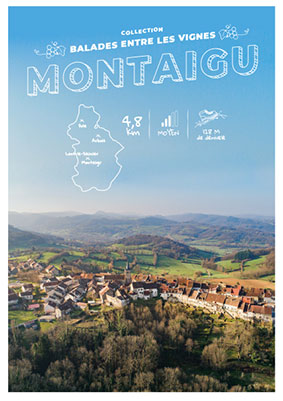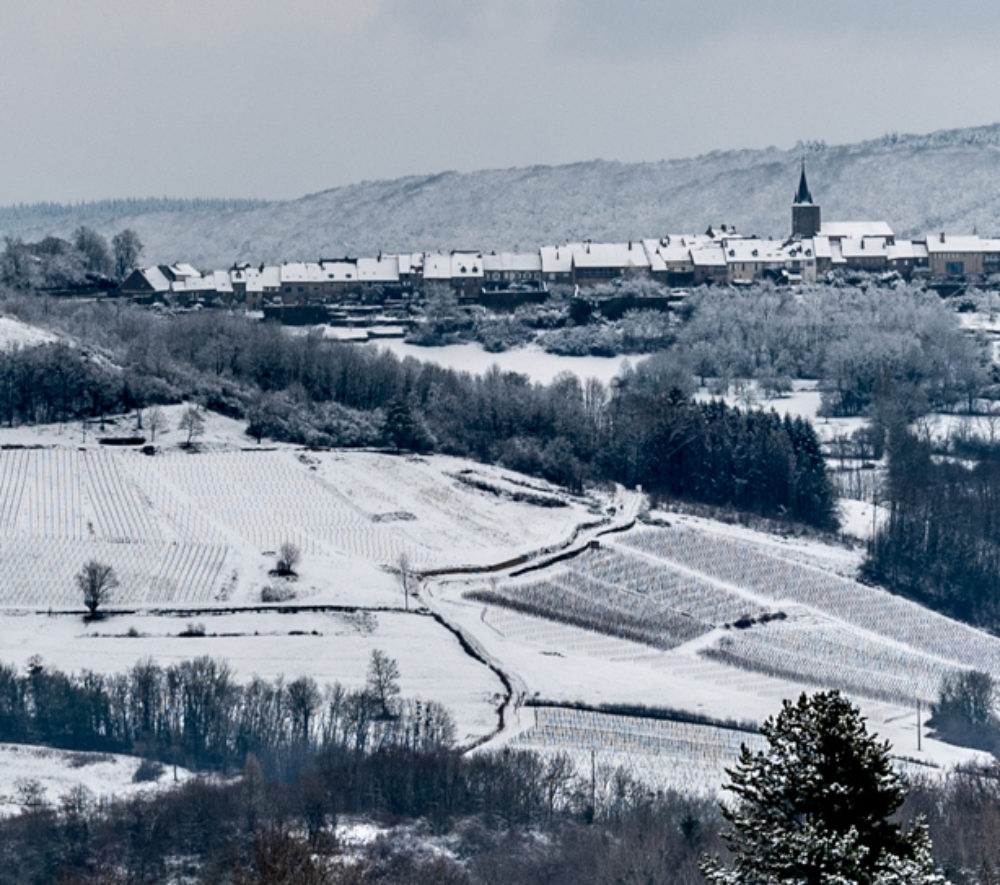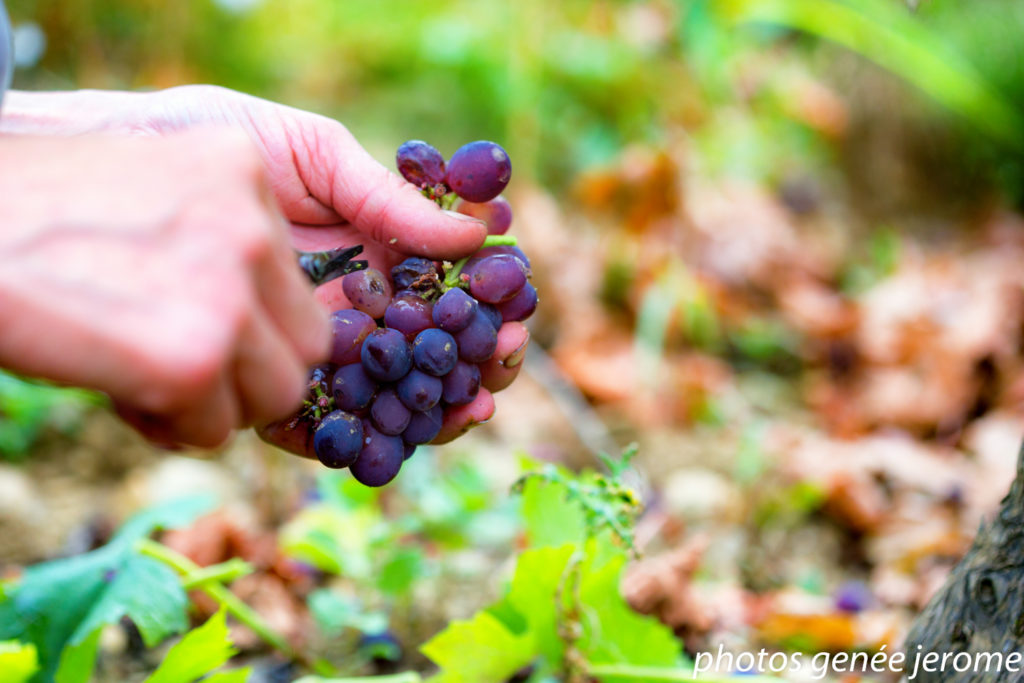Our vineyard, the only one located on the slopes of Montaigu, enjoys conditions where vines naturally prosper. This ideal environment provides optimal conditions for cultivating our vines using biodynamic methods, surrounded by abundant biodiversity.
Thirteen hectares (32 acres) of AOC CÔTES DU JURA vines are spread over the slopes of the two steephead valleys which converge below our village. The Lias and Trias marls here are typical of the Jura terroir.
Today, we are conscious of the unique authenticity, atmosphere and natural assets of our estate, and continue to cultivate vines exclusively around the village of Montaigu, in order to preserve our local, natural yeasts.
Our Techniques
We mainly prune using the Single Guyot method (relatively short) and we have recently developed a few high-density plots, with 10,000 vines/hectare (4,000 vines/acre) and very short pruning (using the bacot method).
During the growing season, we rigorously disbud our vines and then regularly lift and attach the growing shoots. We thin out the foliage manually and remove any suckers to promote airflow around the bunches and ensure they reach maturity.
We do little or no trimming of our vines but do, however, continue to carry out experiments (eg. testing a “port retombant” system of high vines with cascading shoots).
Tillage, applying the biodynamic preparations, and the permanent maintenance of the vines complete our year’s work. We plant “green manure” crops (rye, field beans, field peas, white clover, crimson clover) to create plant cover. We add feather or pig hair flour to stimulate biological activity in the soil as soon as the vines have exhausted their winter energy supplies.
We of course only harvest our grapes manually, with rigorous sorting carried out directly in the vineyard.
We transport our grapes promptly from the vines to the cellar to avoid any oxidation, so that we can ferment the wines with very little or no addition of sulphur.
Most work in the vines is still carried out by hand, the only way to achieve meticulous, quality results. To make all this possible, we need the assistance and skills of roughly ten employees from the end of winter until early summer, with over twenty valiant grape pickers when harvest-time finally dawns.
After reading these lines, you will readily understand that it would be inconceivable for us to distort the fruit of our careful work by supplementing our harvests, even in difficult years, with but a little contribution from a colleague, however well she or he may look after their own vines. This practice has no place on the Pignier estate; we would deem it to be somewhat disrespectful to our customers as well as detrimental to the quality of our wines that we are proud to call authentic. Thus, in order to guarantee the highest quality of the contents of our bottles, we only market juices of our own production, fermented into wine.



